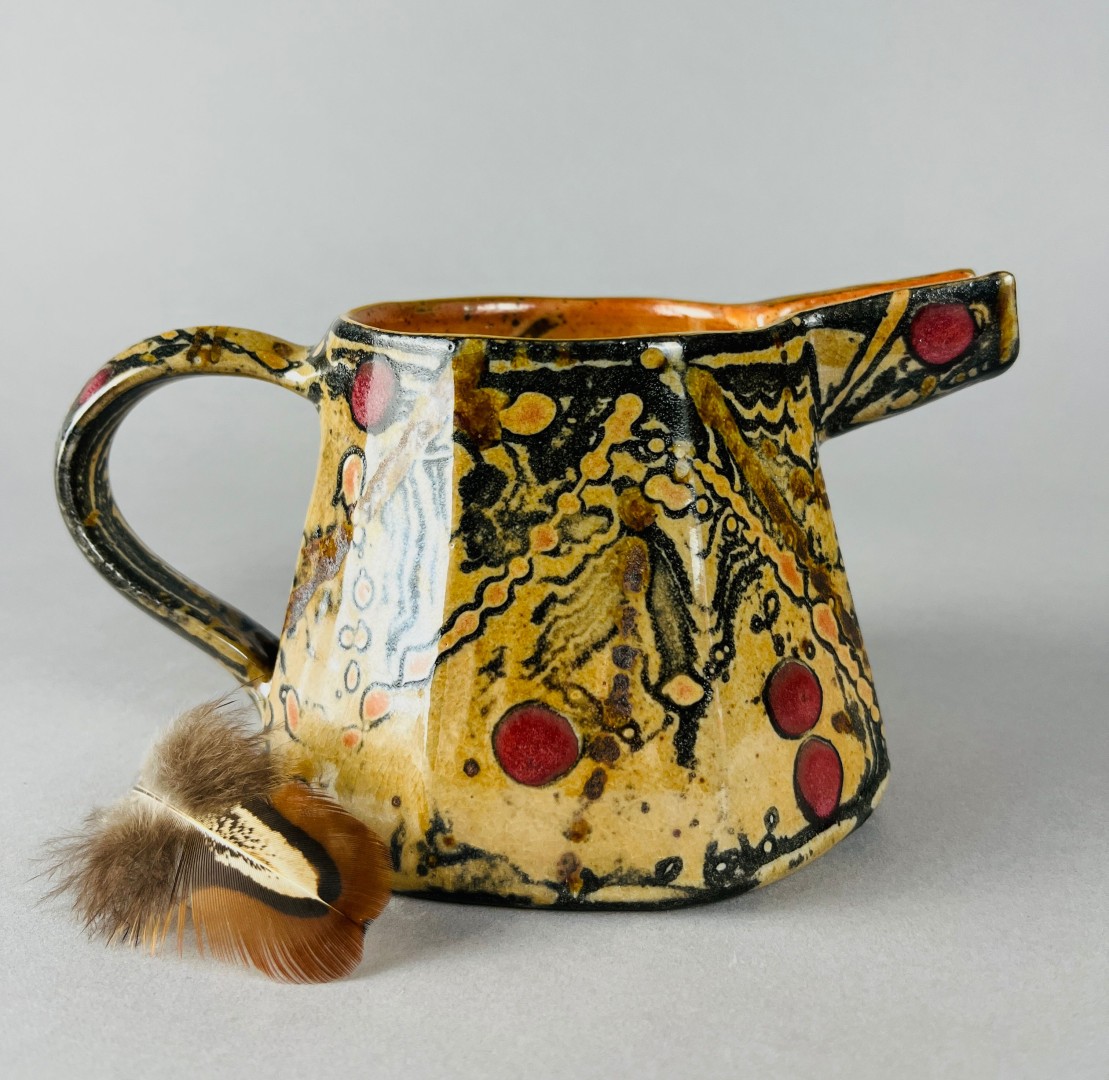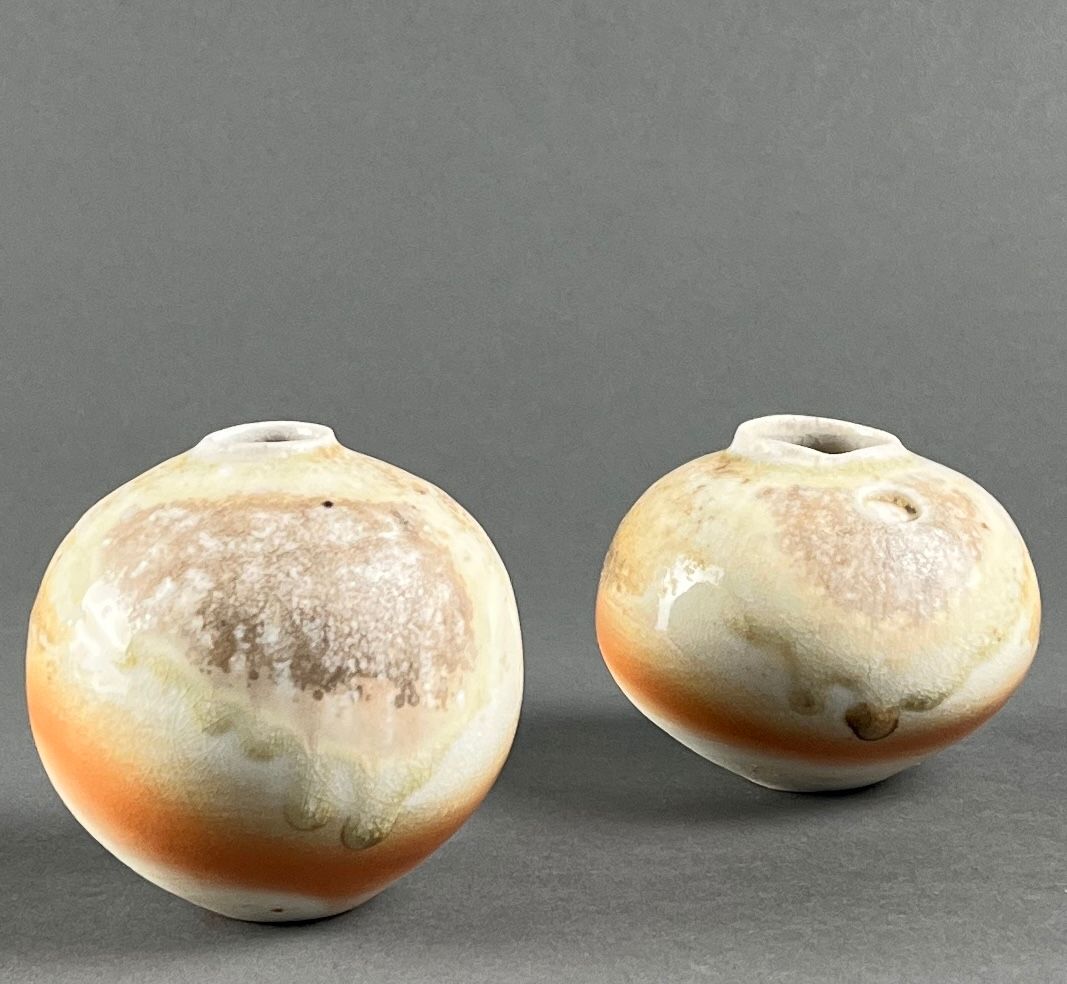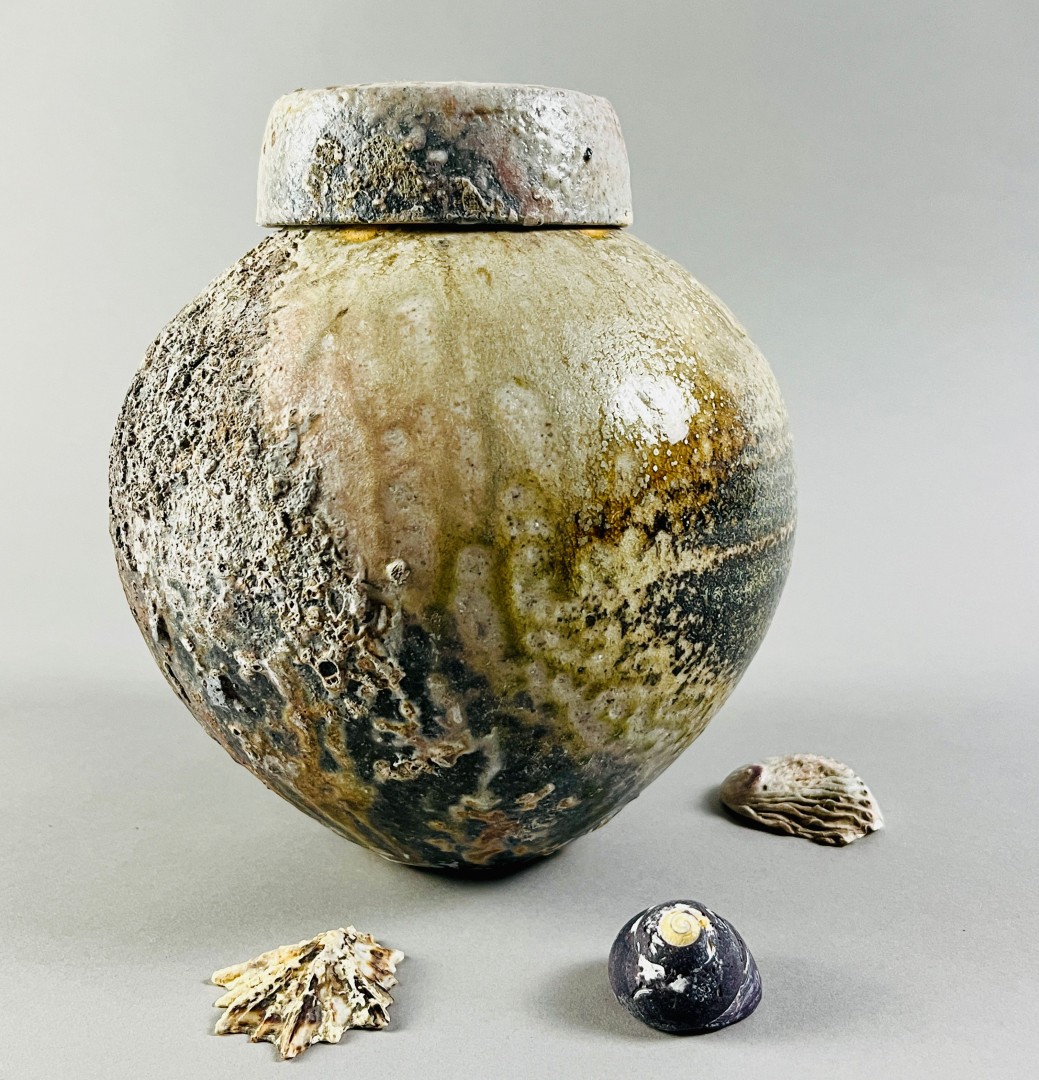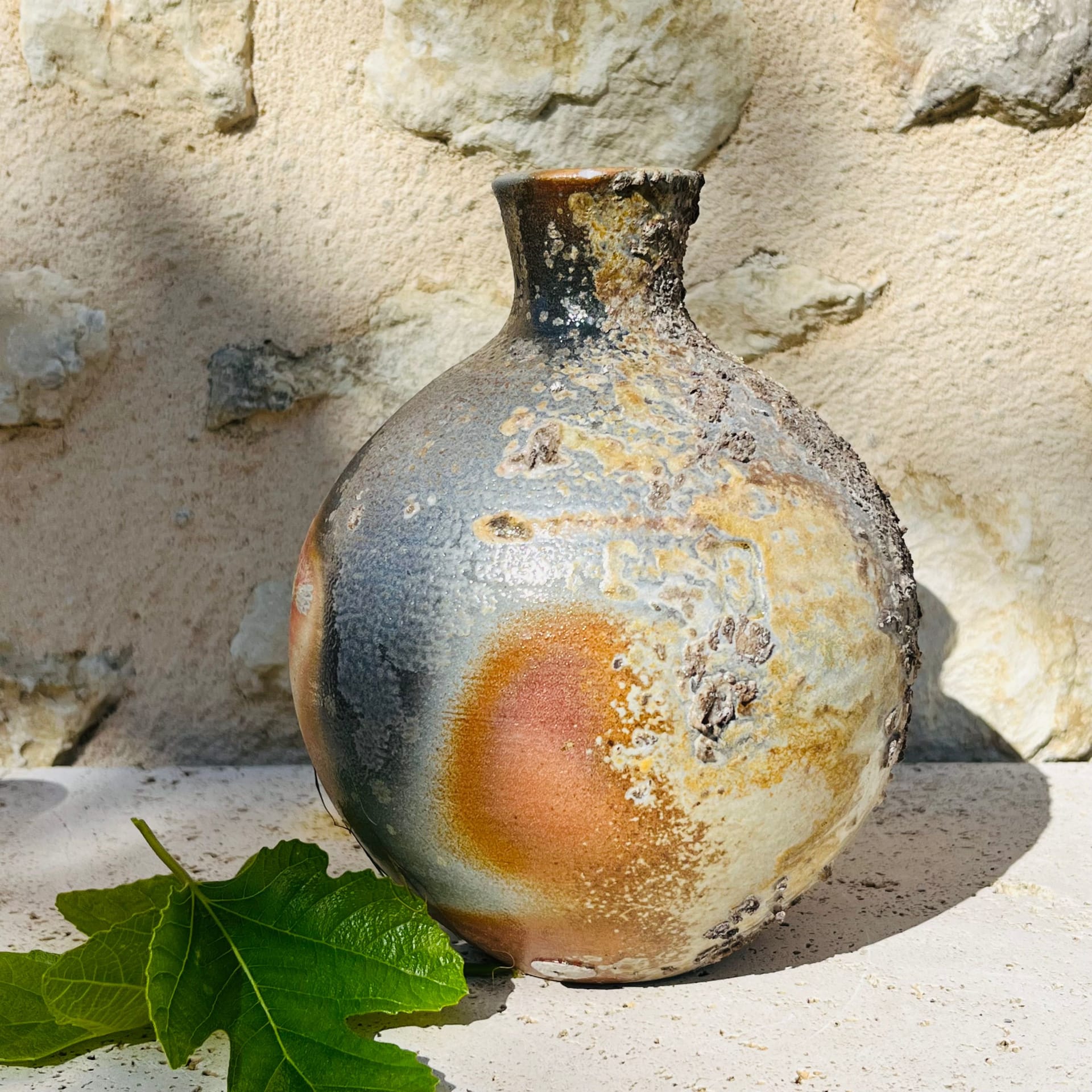This year Harriet Coleridge of Ewelme Pottery is celebrating forty years being a potter. It’s a path that she came across quite fortuitously and chose to follow on the spur of the moment – and one that she has never regretted. Esther Lafferty hears her story.
“I had recently embarked on a PhD in Theology at Bristol University”, she says, “and I happened to visit Aldermaston Pottery with my mother who was looking to buy a wedding present.”
 Alan Caiger Smith – an icon of twentieth century studio pottery – started the Pottery in 1955, specialising in tin glazed earthenware. By the time Harriet visited in 1983 he had a team of eight potters and was well known in the ceramic world. “It had a warm and creative atmosphere and when I remarked on this one of the potters suggested I come and work there. This seemed a crazy notion as I had absolutely no experience of clay, but it was also insanely tempting. Alan liked to take on apprentices who were quite green as it could be easier to teach them from scratch. He took a gamble – and so did I.”
Alan Caiger Smith – an icon of twentieth century studio pottery – started the Pottery in 1955, specialising in tin glazed earthenware. By the time Harriet visited in 1983 he had a team of eight potters and was well known in the ceramic world. “It had a warm and creative atmosphere and when I remarked on this one of the potters suggested I come and work there. This seemed a crazy notion as I had absolutely no experience of clay, but it was also insanely tempting. Alan liked to take on apprentices who were quite green as it could be easier to teach them from scratch. He took a gamble – and so did I.”
Tin glazed earthenware, or maiolica, requires considerable precision; the clay is orange, the glaze is white, and every flaw is conspicuous. The glaze is opacified by tin oxide, and the pots are decorated when the glaze is dry and powdery, before they are fired, with colours made from metal oxides (iron, copper, cobalt). “Mistakes are hard to rectify so it is an excellent training. After four years I set up a studio of my own ten miles away: Cherry Tree Pottery,” she adds.
Harriet spent seven years there, refining her throwing and painting as she went along, and then moved to America in 1994. In rural western New Jersey she found a lively network of potters with whom she built a wood fired salt kiln. This took her in a completely different direction.
She returned to England in 2001 and set up a new pottery studio with a gallery in the historic village of Ewelme, known for watercress and Chaucer. In May she will once again open Ewelme Pottery for Oxfordshire Artweeks for the 23rd year. When she settled in Ewelme, Harriet bought a gas kiln and started exploring the glazes for which she is known today. This was the start of her obsession with shino, a Japanese glaze dating back to the 16th century, and which has followed a complex path from Japan via America to Europe. The ‘carbon trap shino’ that she has been working with over the past decade is elusive but, at its best, dramatic: it can range from amber to gold to charcoal, all on one piece. The dynamic ground of the glaze is enhanced with droplets of ‘sang de boeuf”, a blood red glaze, and sprinklings of rose ash which melts to jade and pine green in the firing. “It is a seriously mysterious glaze, as it is radically affected by the amount of iron in the clay, by the ferocity of the firing and even by the weather on the day the pots are glazed. But when it is just right it really is incomparable.” After the glaze firing she brushes a liquid gold lustre on to the rims of the pots “just to catch the light” and sometimes adds touches of calligraphic brushwork. The pots are then fired a third time.
 This year, as well as the carbon trap shino pots made in Ewelme, visitors to Harriet’s pottery will see a collection of pots fired in an ‘anagama’ kiln in France. “Anagama means cave and it is a big kiln, five metres long, which we restored three years ago. Readers may well have visited the kiln site at Wytham near Oxford where various kilns of this type are regularly fired under the direction of Robin Wilson. The kiln in France, in the Charente, is fired by a team of eight people as the fire is alight for five days and nights. Everyone puts in pots and takes it in turns to keep the fire going – and the firers. We aim to go to 1,300oC and to hold that temperature for a couple of days and nights.
This year, as well as the carbon trap shino pots made in Ewelme, visitors to Harriet’s pottery will see a collection of pots fired in an ‘anagama’ kiln in France. “Anagama means cave and it is a big kiln, five metres long, which we restored three years ago. Readers may well have visited the kiln site at Wytham near Oxford where various kilns of this type are regularly fired under the direction of Robin Wilson. The kiln in France, in the Charente, is fired by a team of eight people as the fire is alight for five days and nights. Everyone puts in pots and takes it in turns to keep the fire going – and the firers. We aim to go to 1,300oC and to hold that temperature for a couple of days and nights.
 In an anagama firing the pots are decorated not by glaze but by the fire itself – by the flame and the flyash which travel through the kiln, snaking around the pots. The pots are vitrified by the heat and the ash combines with the clay to create extraordinarily varied colours and textures – rugged, elemental, sometimes almost volcanic. Pots that are buried in embers can look as if they’ve been a thousand years under the sea, yet pots protected at the back of the kiln can be smooth and creamy. Different woods can also give radically different effects. “Once we fired with acacia and everything came out matt and almost mauve. Another time we used a lot of pine and the ‘biidori’ [melted ash droplets] were green as emeralds.”
In an anagama firing the pots are decorated not by glaze but by the fire itself – by the flame and the flyash which travel through the kiln, snaking around the pots. The pots are vitrified by the heat and the ash combines with the clay to create extraordinarily varied colours and textures – rugged, elemental, sometimes almost volcanic. Pots that are buried in embers can look as if they’ve been a thousand years under the sea, yet pots protected at the back of the kiln can be smooth and creamy. Different woods can also give radically different effects. “Once we fired with acacia and everything came out matt and almost mauve. Another time we used a lot of pine and the ‘biidori’ [melted ash droplets] were green as emeralds.”
After such a long firing the kiln cools for a week and when one looks in, heart in mouth, to see the effects it looks like a ceramic battlefield. But, slowly, slowly the pieces are taken out and one can see – and feel – how they have been transformed.”
After forty years it’s clear that Harriet still loves being a potter and that her spontaneous choice was the right one. “I have loved being a potter for forty years, she smiles, and I would need another forty to try all the things I’d like to try with clay.”
The Ewelme Pottery will be open for Oxfordshire Artweeks in May (venue 407) with an exceptional acorn sculpture as a centrepiece in the garden (along with teas) and work by several other artists ranging from paintings to silk weaving and hand block printed textiles.









